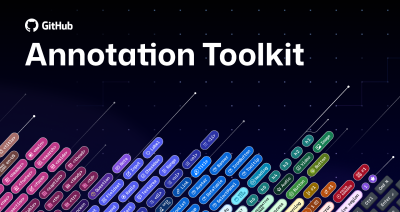Ready to transform your MLOps pipeline? Start exploring Actions and Arm64 runners today, and unlock new levels of efficiency and performance in your ML projects.
Streamlining your MLOps pipeline with GitHub Actions and Arm64 runners
Explore how Arm’s optimized performance and cost-efficient architecture, coupled with PyTorch, can enhance machine learning operations, from model training to deployment and learn how to leverage CI/CD for machine learning workflows, while reducing time, cost, and errors in the process.

In today’s rapidly evolving field of machine learning (ML), the efficiency and reliability of deploying models into production environments have become as crucial as the models themselves. Machine Learning Operations, or MLOps, bridges the gap between developing machine learning models and deploying them at scale, ensuring that models are not only built effectively but also maintained and monitored to deliver continuous value.
One of the key enablers of an efficient MLOps pipeline is automation, which minimizes manual intervention and reduces the likelihood of errors. GitHub Actions on Arm64 runners, now generally available, in conjunction with PyTorch, offers a powerful solution to automate and streamline machine learning workflows. In this blog, we’ll explore how integrating Actions with Arm64 runners can enhance your MLOps pipeline, improve performance, and reduce costs.
The significance of MLOps in machine learning
ML projects often involve multiple complex stages, including data collection, preprocessing, model training, validation, deployment, and ongoing monitoring. Managing these stages manually can be time-consuming and error-prone. MLOps applies the principles of DevOps to machine learning, introducing practices like Continuous Integration (CI) and Continuous Deployment (CD) to automate and streamline the ML lifecycle.
CI and deployment in MLOps
CI/CD pipelines are at the heart of MLOps, enabling the seamless integration of new data and code changes, and automating the deployment of models into production. With a robust CI/CD pipeline defined using Actions workflows, models can be retrained and redeployed automatically whenever new data becomes available or when the codebase is updated. This automation ensures that models remain uptodate and continue to perform optimally in changing environments.
Enhancing performance with Arm64 runners
Arm64 runners are GitHub-hosted runners that utilize Arm architecture, providing a cost-effective and energy-efficient environment for running workflows. They are particularly advantageous for ML tasks due to the following reasons:
- Optimized performance: Arm processors have been increasingly optimized for ML workloads, offering competitive performance in training and inference tasks.
- Cost efficiency: Arm64 runners are priced 37% lower than GitHub’s x64 based runners, allowing you to get more workflow runs within the same budget.
- Scalability: easily scalable within Actions, allowing you to handle growing computational demands.
Arm ❤️ PyTorch
In recent years, Arm has invested significantly in optimizing machine learning libraries and frameworks for Arm architecture. For instance:
- Python performance improvements: collaborations to enhance the performance of foundational libraries like NumPy and SciPy on Arm processors.
- PyTorch optimization: contributions to the PyTorch ecosystem, improving the efficiency of model training and inference on Arm CPUs.
- Parallelization enhancements: enhancements in parallel computing capabilities, enabling better utilization of multi-core Arm processors for ML tasks.
These optimizations mean that running ML workflows on Arm64 runners can now achieve performance levels comparable to traditional x86 systems, with cost and energy efficiency.
Automating MLOps workflows with Actions
Actions is an automation platform that allows you to create custom workflows directly in your GitHub repository. By defining workflows in YAML files, you can specify triggers, jobs, and the environment in which these jobs run. For ML projects, Actions can automate tasks such as:
- Data preprocessing: automate the steps required to clean and prepare data for training.
- Model training and validation: run training scripts automatically when new data is pushed or when changes are made to the model code.
- Deployment: automatically package and deploy models to production environments upon successful training and validation.
- Monitoring and alerts: setup workflows to monitor model performance and send alerts if certain thresholds are breached.
Actions offer several key benefits for MLOps. It integrates seamlessly with your GitHub repository, leveraging existing version control and collaboration features to streamline workflows. It also supports parallel execution of jobs, enabling scalable workflows that can handle complex machine learning tasks. With a high degree of customization, Actions allows you to tailor workflows to the specific needs of your project, ensuring flexibility across various stages of the ML lifecycle. Furthermore, the platform provides access to a vast library of pre-built actions and a strong community, helping to accelerate development and implementation.
Building an efficient MLOps pipeline
An efficient MLOps pipeline leveraging Actions and Arm64 runners involves several key stages:
- Project setup and repository management:
- Organize your codebase with a clear directory structure.
- Utilize GitHub for version control and collaboration.
- Define environments and dependencies explicitly to ensure reproducibility.
- Automated data handling:
- Use Actions to automate data ingestion, preprocessing, and augmentation.
- Ensure that data workflows are consistent and reproducible across different runs.
- Automated model training and validation:
- Define workflows that automatically trigger model training upon data or code changes.
- Use Arm64 runners to optimize training performance and reduce costs.
- Incorporate validation steps to ensure model performance meets predefined criteria.
- CD:
- Automate the packaging and deployment of models into production environments.
- Use containerization for consistent deployment across different environments.
- Leverage cloud services or on-premises infrastructure as needed.
- Monitoring and maintenance:
- Setup automated monitoring to track model performance in real time.
- Implement alerts and triggers for performance degradation or anomalies.
- Plan for automated retraining or rollback mechanisms in response to model drift.
Optimizing workflows with advanced configurations
To further enhance your MLOps pipeline, consider the following advanced configurations:
- Large runners and environments: define Arm64 runners with specific hardware configurations suited to your workload.
- Parallel and distributed computing: utilize Actions’ ability to run jobs in parallel, reducing overall execution time.
- Caching and artifacts: use caching mechanisms to reuse data and models across workflow runs, improving efficiency.
- Security and compliance: ensure that workflows adhere to security best practices, managing secrets and access controls appropriately.
Real-world impact and case studies
Organizations adopting Actions with Arm64 runners have reported significant improvements:
- Reduced training times: leveraging Arm optimizations in ML frameworks leads to faster model training cycles.
- Cost savings: lower power consumption and efficient resource utilization result in reduced operational costs.
- Scalability: ability to handle larger datasets and more complex models without proportional increases in cost or complexity.
- CD: accelerated deployment cycles, enabling quicker iteration and time-to-market for ML solutions.
Embracing CI
MLOps is not a one-time setup but an ongoing practice of continuous improvement and iteration. To maintain and enhance your pipeline:
- Regular monitoring: continuously monitor model performance and system metrics to proactively address issues.
- Feedback loops: Incorporate feedback from production environments to refine models and workflows.
- Stay updated: keep abreast of advancements in tools like Actions and developments in Arm architecture optimizations.
- Collaborate and share: engage with the community to share insights and learn from others’ experiences.
Conclusion
Integrating Actions with Arm64 runners presents a compelling solution for organizations looking to streamline their MLOps pipelines. By automating workflows and leveraging optimized hardware architectures, you can achieve greater efficiency, scalability, and cost-effectiveness in your ML operations.
Whether you’re a data scientist, ML engineer, or DevOps professional, embracing these tools can significantly enhance your ability to deliver robust ML solutions. The synergy between Actions’ automation capabilities and Arm64runners’ performance optimizations offers a powerful platform for modern ML workflows.
Additional resources
- Getting started with GitHub Actions: GitHub Actions Documentation
- Arm architecture and ML: Arm Developer Resources for AI and ML
- Arm community blogs: Arm for AI and ML
Tags:
Written by
Related posts

Level up design-to-code collaboration with GitHub’s open source Annotation Toolkit
Prevent accessibility issues before they reach production. The Annotation Toolkit brings clarity, compliance, and collaboration directly into your Figma workflow.

How to use the GitHub and JFrog integration for secure, traceable builds from commit to production
Connect commits to artifacts without switching tools.

How to streamline GitHub API calls in Azure Pipelines
Build a custom Azure DevOps extension that eliminates the complexity of JWT generation and token management, enabling powerful automation and enhanced security controls.